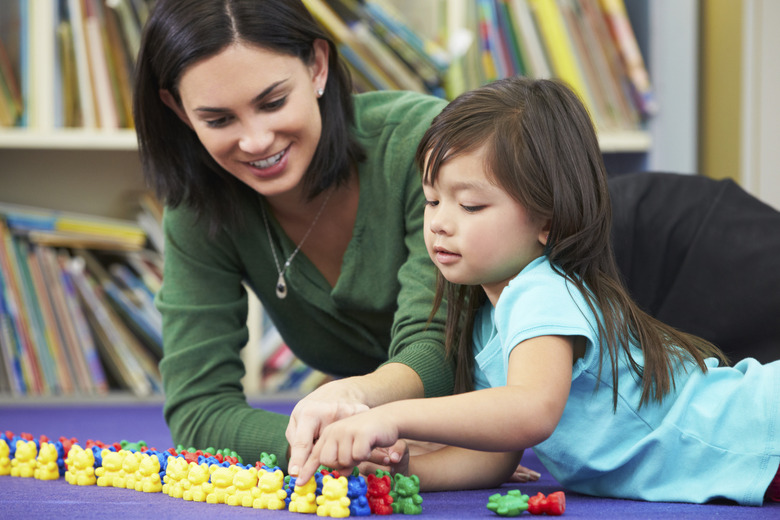How To Teach Kids Even And Odd Numbers
Parents and teachers can help early elementary age children learn to distinguish between odd and even numbers, using games, manipulatives and recitation. Kindergartners and first graders can learn even and odd numbers to 10 or 20, and second and third graders can learn to identify larger odd and even numbers — those in the hundreds, thousands or millions. Learning odd and even numbers will help students with progressive math functions such as multiplication, division and fractions.
Paired Linking Cubes
Paired Linking Cubes
Provide a tub of small plastic linking cubes and ask the students to use both hands to scoop a small pile of blocks onto their desk. Have the students put their cubes in two-cube stacks until they've used up all their blocks. Ask the students who have a remaining cube to raise their hand and tell you how many total blocks they have in their stack such as 13, 17 or 21. Write those numbers on the board and explain that they are odd numbers, because you can't divide them into equal parts without having a cube left over. Do the same exercise with students who don't have any remaining cubes — their cube totals represent even numbers.
Even and Odd Recitation
Even and Odd Recitation
Write the numbers from one to 20 horizontally on your blackboard or white board, using one color for even numbers and another for odd numbers. You might also raise the odd numbers slightly or make the even numbers slightly larger, so that the students can easily recognize the patterns. Have the students practice saying even and odd numbers as you point to them in order. You might ask the students to whisper the even numbers and shout the odd numbers. Explain that zero isn't even or odd, but all numbers that end in zero are even.
Rolling the Dice
Rolling the Dice
Divide your class into groups of two and give each group a piece of paper, a pencil and two dice. Have each group divide their paper into two columns and label one column "even" and the other "odd." Ask each group to roll their dice, count up the number of dots and record whether the number is even or odd by placing a tally mark in the correct column. After rolling the dice and recording the totals for 10 minutes, take a poll to see which groups had more even numbers versus those who odd numbers.
Even-Odd Secret Game
Even-Odd Secret Game
Teach the students to identify larger odd and even numbers by instructing them to look at the ones place. Write 2, 12, 22, 32 and 42 on the board in a vertical column and explain that all numbers ending in "2" are even. Repeat the exercise with other two- and three-digit odd and even numbers. Play an even-odd game by asking students to put their head on their desk and close their eyes. Say a number aloud and ask the students to raise their hand if they think it's even or to put their hand on top of their head if they think it's odd. Slowly progress from two-digit numbers to numbers in the hundreds, thousands or millions. The game is fun for the students and gives you an opportunity to see how quickly and accurately your students can recognize odd and even numbers.
Cite This Article
MLA
Tucker, Kristine. "How To Teach Kids Even And Odd Numbers" sciencing.com, https://www.sciencing.com/teach-kids-even-odd-numbers-2188166/. 24 April 2017.
APA
Tucker, Kristine. (2017, April 24). How To Teach Kids Even And Odd Numbers. sciencing.com. Retrieved from https://www.sciencing.com/teach-kids-even-odd-numbers-2188166/
Chicago
Tucker, Kristine. How To Teach Kids Even And Odd Numbers last modified March 24, 2022. https://www.sciencing.com/teach-kids-even-odd-numbers-2188166/
